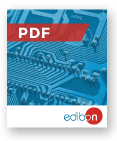
NEW Renewable Energy leaflet
With our complete Renewable Energy area, EDIBON gives answer to the academic demand for teaching and learning concepts of Energy, in an easy and practical way.
DownloadRenewable energies are clean, unlimited and increasingly competitive sources of energy. They are energy sources based on the use of natural resources: sun, wind, water or plant or animal biomass. They differ from fossil fuels mainly in their diversity, abundance and potential for use in any part of the planet, but especially in the fact that they do not produce greenhouse gases.
View moreThanks to the development of renewable energies, it is possible to combat climate change and avoid its devastating impact. Global warming due to greenhouse gases is a fact and that is why one of the goals set by the United Nations is to achieve universal access to electricity by 2030.
There are various types of renewable energy such as wind energy, photovoltaic energy, hydropower, biomass and biogas, geothermal energy, tidal energy, wave power, bioethanol and biodiesel.
Given the importance of renewable energies, their main advantages should be emphasized: they do not emit greenhouse gases, are inexhaustible and less and less expensive, reduce energy dependence, and have a favorable political horizon.
Due to the proliferation of renewable energies and the need to create more efficient and flexible power systems, decentralized generation is becoming more and more popular. This is the origin of the Micro-Grids concept. They are bidirectional power generation systems, based mostly on renewable energies, which distribute electricity from various points of energy generation to consumers through digital technology and favoring the integration of renewable energies.
Thanks to this technological evolution that has given rise to renewable energies and to their decentralization, it has been possible to integrate the electric vehicle in today's society. In turn, this has significantly reduced greenhouse gases (CO2) and costs and increased the reliability of the electrical system.
View Products